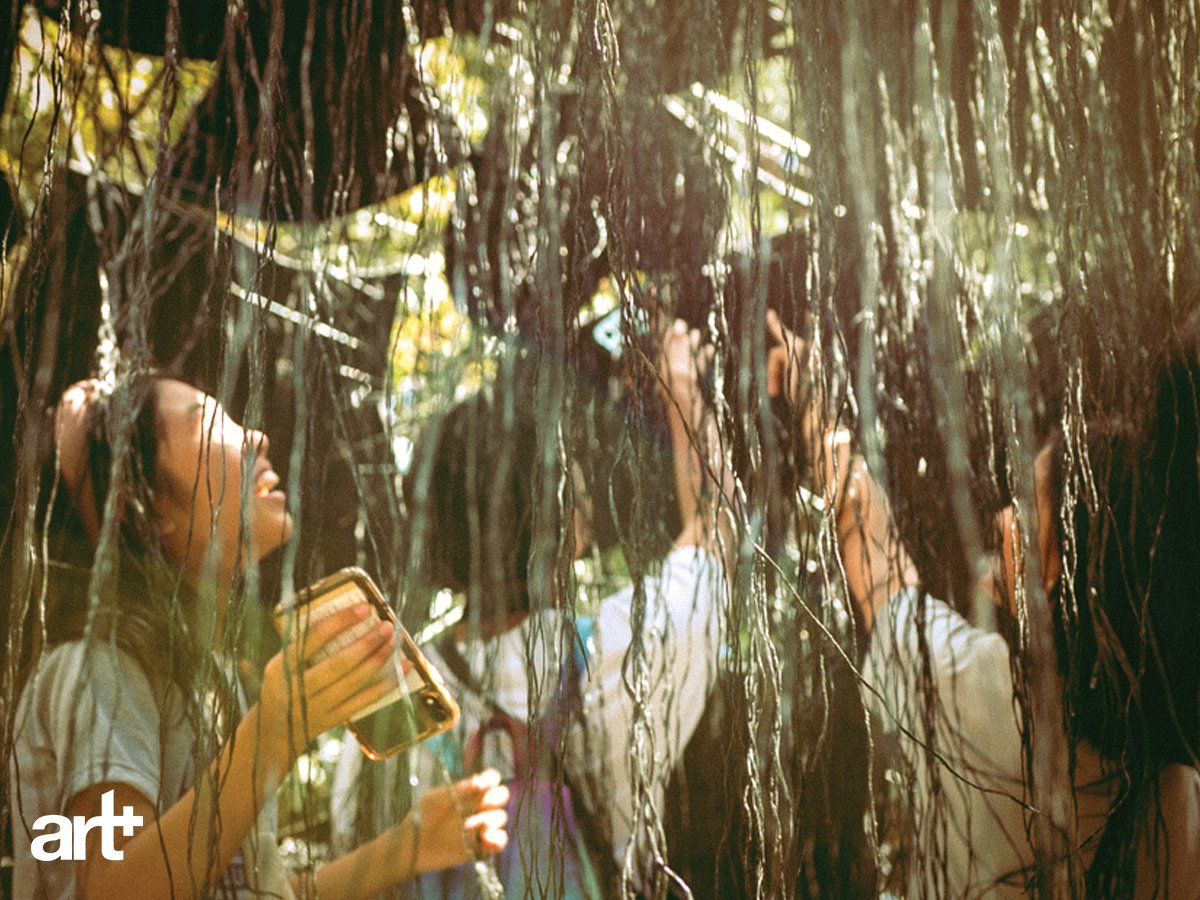The Trees Say Hello
If Trees Could Talk International Art Biennale is envisioned as an opportunity for us to be one with nature.
Words Amanda Juico Dela Cruz
April 17, 2024
"Mycelium Clouds"
What would trees tell us, a visitor asked Jaime Pacena II, one of the curators of If Trees Could Talk International Art Biennale, during its opening last February 24. I have also asked myself this question many times since I first encountered the Biennale in a Facebook post, which has proven the success of the title to provoke. Each time, my answer would go along the lines of “Save us” or “Protect us.” What a cliché.
I was admittedly stunned when Gigo Alampay, founder and executive director of Center for Art, New Ventures and Sustainable Development (CANVAS) and co-curator of the Biennale, said in our Zoom conversation with Pacena that we were saving trees, the environment as a whole, for ourselves, if we were to be completely honest. The Earth could survive without us, he said. It could heal on its own even without humans in it. I was reminded of what I learned in one of the Eastern philosophies: that the Earth is independent from its human inhabitants, refuting what was taught to me as a child that we were created to become stewards of God’s creations. The truth is this mentality is one of the reasons why we think we are the highest form of creation when we are merely co-existing with the rest of the living creatures. To be quite frank, we are way more dependent on the Earth, more than we would like to admit. Thus, “Hello” is enough for trees if they could speak to us.
A lot of things could start from “Hello,” Pacena said. For the Biennale, it simply meant trees making their presence known to us. It seems that we have forgotten the language we used to share with them before we entered the Age of Industrialization, and in forgetting this language, we have also forgotten what co-existence must mean.
Geraldine Javier's "Air, Water, Earth, Fire, Void"
The Biennale is put up in a vast land in Ibaan, Batangas, at least an hour-and-a-half drive from Manila, where CANVAS envisions to build its Tumba-Tumba Children’s Museum of Philippine Art. At the heart of CANVAS’ initiatives are children: how to make visual art graspable, how to maximize the power of storytelling, and how to spread awareness about current issues in a language they understand. Children must learn at their young age that we are reaching the tipping point of environmental destruction because they are the future of this world. While we, the living generation of adults, must remember how it is to be child-like because we must unlearn many things that were taught to us growing up, which collectively caused these destructions.
The curators envisioned the Biennale to be an opportunity for us to be one with nature when we have been deprived of such opportunities by the promises of capitalism. In the Biennale, we are meant to feel the grass when we have become used to heels tapping on concrete, to bask in the warmth of the sun when we have learned to become afraid of it, to listen to the swaying of branches and the chirping of birds that live in it when nature has become a foreign realm to urban dwellers.







